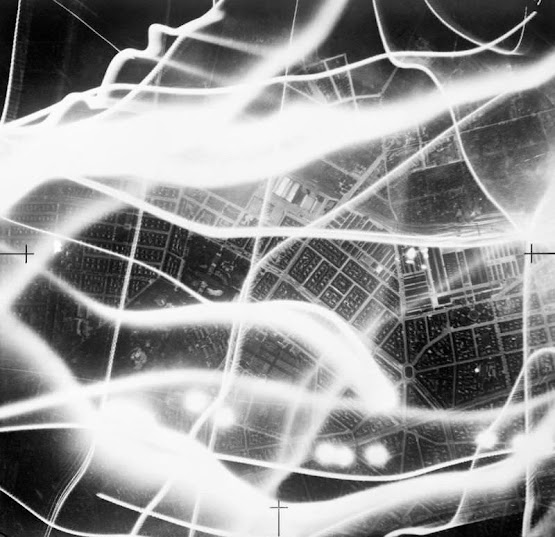Duet (pronounced doo-et or dyoo-et (non-U))
(1) In
music, a composition for two voices or instruments.
(2) An
action or activity performed by a pair of closely connected individuals.
(3) A
pair or couple, especially one that is harmonious or elegant.
1730–1740: From the Italian duet (a short musical composition for two voices), from duo (two) and a diminutive of the earlier duett & duetto, the construct being du(o) (duet) + -etto (from the Late Latin -ittum, accusative singular of –ittus, an alternative suffix used to form melioratives, diminutives, and hypocoristics). The ultimate source was the Proto-Italic duō, from the primitive Indo-European dwóh. The French adopted duet before the English in 1740 although the noun may have been used in English from circa 1724; as a verb (to perform a duet), use was first noted in 1822. The technical form duettino (short, unpretentious duet) emerged by 1839. Duet is a noun & verb, duetting & duetted are verbs and duettist is a noun; the noun plural is duets.
Madam Butterfly
Maria Callas (1923-1977), backstage, in costume, after appearing as Madam Butterfly, Civic Opera House, Chicago, 17 November 1955. Had Cio-Cio-San been this feisty, she'd have kept Pinkerton.
Bud Daley’s famous AP (Associated Press) photograph of diva Maria Callas, still in her Cio-Cio-San’s kimono, caught her snarling at US Federal Marshal Stanley Pringle, one of eight process servers there to serve her with two summonses. The image was shot just after she'd left the stage, following her third and final performance in Giacomo Puccini's (1858–1924) Madama Butterfly (Madam Butterfly, 1904) and appeared the next morning on the front page of the Chicago Sun-Times with the headline: “Not So Prim a Donna”. The article reported her words as: “Chicago will hear about this! I will not be sued! I have the voice of an angel! No man can sue me.” It transpired however at least one man could sue, the action brought by one Edward “Eddy” Bagarozy, who claimed to be the singer’s agent, an assertion based on a contract dating from 1947; the plaintiff sought (1) specific performance of the contract and (2) in the alternative, damages of US$300,000 (depending on the metrics chosen, equivalent to between US$4-6 million in 2025). As in many such matters, ultimately, things were settled out of court.
Although
The Alfa Romeo (type 105/115) Spider was continuous production between
1966-1993, it was only during the first three years the bodywork featured the
memorable Osso di Seppia (round-tail,
literally “cuttlefish”) coachwork. After
1970, the Spider gained a Kamm tail which increased luggage capacity and
presumably also conferred some aerodynamic advantage but purists have always
coveted the cigar-shaped original. One
often misunderstood aspect of the Kamm tail is that the aerodynamic benefits
are realized only if the flat, vertical surface created was no more than about
50% of the total area of the vehicle (as viewed directly from the back). That’s why even designs which don’t conform
to the requirements are often casually referred to as “Kamm tails”.
The Kamm tail (also known as the Kammback) was named after German engineer & aerodynamicist Professor Wunibald Kamm (1893–1966) who during the 1930s pioneered the shape, his work assisted greatly by some chicanery within the Nazi military-industrial complex which enabled the FKFA (Forschungsinstituts für Kraftfahrwesen und Fahrzeugmotoren Stuttgart (Research Institute of Automotive Engineering and Vehicle Engines Stuttgart) institute he established in 1930s to secure funding to construct a full-sized wind tunnel equipped with a two-part steel treadmill in the floor and an 8.8 metre (350 inch) diameter axial fan, able to drive air at up to 400 km/h (250 mph). What the two concentric floor turntables allowed was that as well as enabling turbulence to be studied from the side on the running steel belt, but slip angles were also possible. At the time, it was the most modern structure of its kind on the planet and its very existence was owed to the priority afforded by the Nazis to re-armament, especially the development of modern airframes, most of the money eventually coming from the Reichs-Luftfahrt-Ministerium (RLM, the State Air Ministry).
While Professor’s Kamm’s work on automobile shapes continued, increasingly the facility became focused on military contracts, contributing to the extraordinary range of novel aircraft designs, some revolutionary and most of which would never reach production. All of this ceased in July 1944 when the facility was severely damaged in air-raids by Royal Air Force (RAF) Bomber Command (a costly campaign on which one mission incurred a loss-rate of 20%) and it wasn’t until the late 1940s that reconstruction began after it was acquired by Daimler-Benz AG which enlarged and modernized the machinery, the early fruits including the 300 SL (the W194, first gullwing coupé) which won the 1952 Le Mans 24 hour race and the W196R Strómlinienwagen (literally "streamlined car" but translated usually as "Streamliner". “streamliner”) Formula One race cars which created such a sensation in 1954 (although the drivers were so enamoured, preferring to be able to see the front wheels so a conventional open-wheel version was created with the Strómlinienwagen subsequently used only on the circuits where the highest speeds were recorded. Although he wasn’t part of “Operation Paperclip” (the US project which secured (by various means including the military “smuggling” them into the country despite many being wanted by those investigating war crimes and crimes against humanity), Professor Kann was acknowledged as one of the world’s leading authorities on turbulence and between 1947-1953 was part of the team working at Wright-Patterson Air Force Base in Dayton, Ohio. Some of what was undertaken then remains classified but it can be assumed it was all related to military projects and what would later become the space program.
Lindsay Lohan duetting: On stage with Duran Duran (left) and spinning the vinyl with former special friend, DJ Samantha Ronson.
Alfa Romeo in
1965 conducted a competition to find a suitable name for the little roadster
and in those days that meant running advertisements in newspapers (which people
actually paid for and read) to which readers responded by cutting out and
filling in the coupon, writing in their suggestion, putting it in an envelope
on which they wrote the address, buying and affixing a stamp and putting
envelope in mailbox. The winning entry was
"Duetto" which Alfa Romeo's directors liked because it summed up the
romantic essence of a machine definitely built for a couple. Unfortunately, for some tiresome legal reason
relating to an existing trademark, it couldn't officially be used but for decades,
among the cognoscenti, it's always been called the Duetto.
Track of the Kamm, Alfa Romeo Spiders: 1973 Series 2 (1970-1983, left), 1984 (Series 3 (1983-1990, centre) and 1992 Series 4 (1990-1993, right). Things got worse before they got better.
To keep the tiresome lawyers at bay, when released at the Geneva Motor Show in March 1966, the car was known as the Spider 1600, the advertising making clear it was intended to be a practical sports car, usable year-round rather than something intended for competition. Among those who like to call them Duettos, there’s a sub-set of pedants who like to point out that while all Duettos are round-tails, not all round-tails are Duettos because in 1967, Alfa Romeo introduced the more powerful 1750 Spider Veloce and the less potent 1300 Junior, the former positioned a notch above the original, the latter one below. That’s too nerdy for most who prefer to form factions based upon the tail treatment and surprisingly perhaps, many do seem to prefer the appearance of the abbreviated Kamm-tail and, again surprisingly, that included even the editors of the US magazine Road & Track (R&T), a publication in the 1960s inclined to see anything Italian through a rose-tint, called the coda lunga (round tail) “a contrived design with meaningless styling gimmicks.” Professionally-trained designers tend not to like the original because in violating some of the rules they've been taught, it's judged flawed and probably much of the appeal of the coda lunga is as a period piece in the same way the exaggerated fins on the early Sunbeam Alpines (1959-1968) have a certain charm although few would claim their pruning didn’t improve the look.
The spelling in Swedish for a musical performance by two is duett and when in 1953 Volvo released what they described as a dual purpose vehicle, the company choose to dub it Duett. Adopting a technique used around the world, Volvo based the Duett on an existing passenger car, modified to the extent it became a useful, load-carrying utility vehicle which substantially retained the functionality of a sedan. What was however untypical of the breed was that although the Duett (PV445 (1953-1960) & P210 (1960-1969)) was based on a sedan (PV444 (1944-1958) & PV544 (1958-1966)) which used modern unitary construction, it had a more robust ladder-frame chassis as its platform. As well as ensuring greater durability, this had the advantage of meaning that in addition to the station wagon and panel van (often called “delivery sedan” in the US) bodies, the factory could provide coachbuilders a chassis with no bodywork aft of the windscreen; from these could be constructed ambulances, pick-ups and other specialized vehicles. Remarkably, despite the agricultural nature of the chassis, some coachbuilders took advantage of the intrinsic rigidity and built four-seat cabriolets. Befitting the intended purpose, instead of the sedan’s rear coil-spring, the Duett’s rear suspension used semi-ecliptics (“cart” or “leaf” springs) which (1) intruded less into the storage compartment meaning greater internal capacity, (2) were better suited to towing and (3) allowed a heavier freight-rating. As is common with such vehicles, the Duett out-lasted the sedan on which it was based, the last made in 1969, some four years after the PV544 had been replaced by the 140 series (1966-1974).



























